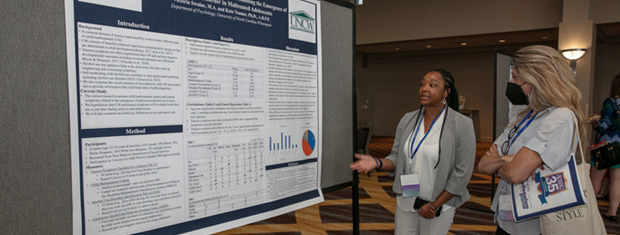




The APSAC Advisor is a peer reviewed quarterly news journal for professionals in the field of child abuse and neglect.
The APSAC Advisor provides succinct, data-based, practice-oriented articles that keep interdisciplinary professionals
informed of the latest developments in policy and practice the field of child maltreatment. It is designed to highlight
best practices in the field and publish original articles and current information about child maltreatment for professionals
from a variety of backgrounds including medicine, law, law enforcement, social work, child protective services, psychology,
public health and prevention in the U.S.
 If you wish to learn more about submitting an article to the Advisor, please click here.
If you wish to learn more about submitting an article to the Advisor, please click here.
This library contains Advisor issues dating back to the first issue in 1988. The most recent issue appears at the top.
Scroll down to select past issues by year and issue number. Once a publication appears in the box, you
can use the Enlarge button to open the document in a new window or tab (depending on how your browser is set up).
This will allow you to view the document with larger print.
To print a document, first use the Enlarge button to open the document in a new window or tab. Then use your browser's Print command.
To return here from a new tab, close the tab. To return from a new window, click your browser's Back button.
In the listing below, click on a year and issue number to see the articles in that publication.
2022 Number 1
Race, Trauma, and the Education System
Education personnel make up the largest source of Child Protective Services referrals. Yet with the ongoing disparities evident in the child welfare and education systems, we can no longer look the other way and ignore systemic issues inherent in these systems. Schools are an important partner in promoting the safety and well-being of children. Therefore, acknowledging the role of colorblind racial ideology in propagating disparities against Black and Brown students is necessary. This is important in understanding and reflecting on how teachers interpret, and respond to, students’ emotions in the classroom, especially if students have a history of adversity. We end the article by offering guiding questions for our members to reflect on their own practice and encourage the reappraisal of thoughts, feelings, and action around the intersection of race, trauma, and education.
Children with untreated dental disease may routinely go unrecognized. Many non-dentists may not realize that a child's tooth infection can have serious, if not deadly, consequences. In clinical practice, dental neglect through willful intent is already difficult to demonstrate for someone who has dental knowledge. The generic questions asked by child welfare caseworkers regarding concerns for cases of child abuse or neglect may not necessarily address the specific complexities of dental neglect. With all of these nuances in mind, this article presents a list of questions that could be utilized in clinical practice and for child welfare caseworkers receiving reports to critically analyze whether dental neglect is occurring and whether the family has been given adequate accommodations and opportunities for care.
Comparison of State Online Mandated Reporter Trainings
This article presents the results of a comparative analysis of online mandated reporter trainings regarding child abuse. Programs from 47 U.S. states and the District of Columbia were reviewed and their content and features compared with iLookOut for Child Abuse’s Core Training. Significant variation was identified in terms of the scope, content, didactic approach, delivery method, and outcome measures across different trainings. These findings raise concern that while all children need protection from abuse, not all mandated reporters are receiving comparable preparation to fulfill this important moral and legal responsibility.
Students’ experiences of prior trauma may adversely affect their academic, social, and behavioral functioning in the classroom, resulting in necessary additional relational support from teachers. However, this additional support often depletes teachers’ personal resources, resulting in heightened levels of burnout and compassion fatigue. These teacher responses to stress can make it challenging to provide the increased relational support required to best support students who have experienced trauma, thus exacerbating students’ poor self-regulation and academic performance in the classroom, as well as teacher stress. This article reviews ways teachers can be supported in the development and maintenance of self-care practices and activities to reduce stress and burnout as well as explores avenues to foster meaningful teacher�"student relationships and promote positive student outcomes.
Reflections of My Time With APSAC and the Advisor
APSAC Advisor 34(1) - Full Issue